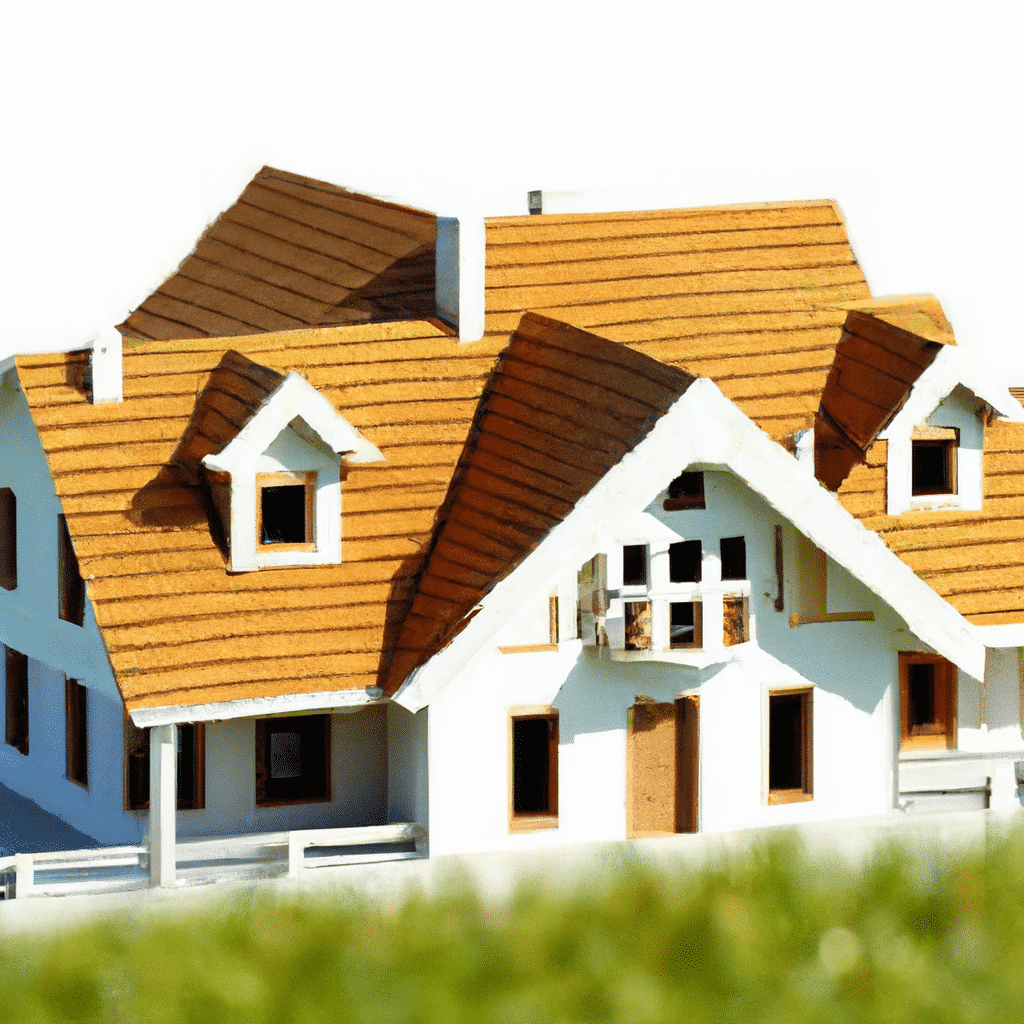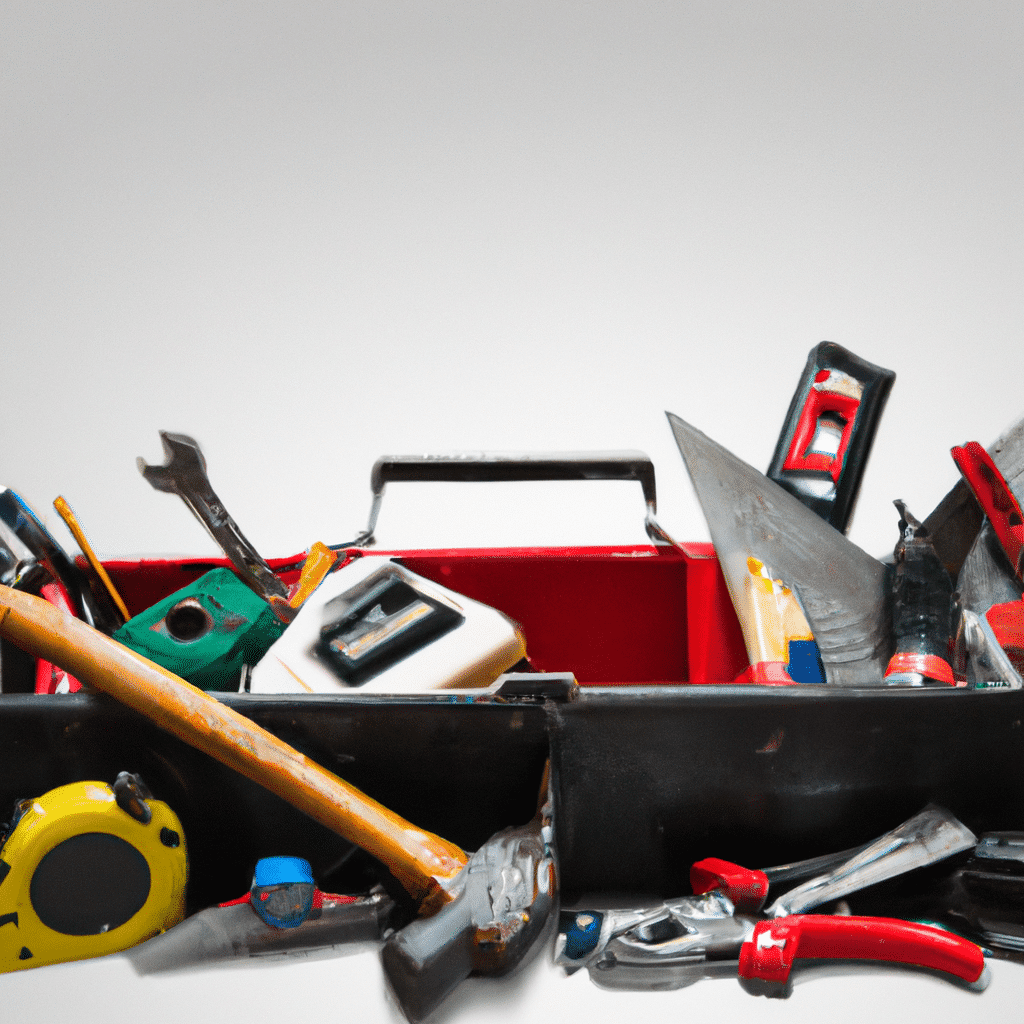So you’ve been thinking about renovating your home, but you’re curious about how much it would cost you. Well, look no further. This article will shed some light on the average spending for home improvement projects. Whether you’re planning to give your kitchen a makeover or spruce up your backyard, understanding the average costs can help you set realistic expectations and budget accordingly. So let’s dive into the numbers and get a clearer picture of what it takes to turn your house into your dream home.
1. Cost of Home Improvement Projects
Home improvement projects can add significant value to your home while enhancing your overall living experience. However, before embarking on any project, it’s crucial to understand the potential costs involved. The average spending on home improvement projects can vary depending on factors such as the scope of the project, quality of materials, location, labor costs, and more. Let’s take a closer look at some popular home improvement projects and their associated costs.
1.1 Bathroom Renovation
A bathroom renovation is a common project that many homeowners undertake to refresh the look and functionality of their bathrooms. The cost of a bathroom renovation can range from a few thousand dollars to tens of thousands, depending on the extent of the renovations. This includes factors such as replacing fixtures, installing new tiles, updating lighting, and potentially reconfiguring the layout of the space.
1.2 Kitchen Remodel
The kitchen is often considered the heart of the home, and a kitchen remodel can greatly enhance both its visual appeal and functionality. On average, homeowners can expect to spend anywhere between $10,000 to $50,000 or more on a kitchen remodel, depending on the size and complexity of the project. This cost includes expenses for new cabinets, countertops, appliances, flooring, and plumbing.
1.3 Basement Finishing
A finished basement offers valuable additional living space that can be utilized for various purposes such as an entertainment area, home office, or guest suite. The cost of finishing a basement typically ranges from $10,000 to $50,000, depending on factors such as insulation, drywall installation, flooring, lighting, and plumbing requirements.
1.4 Roof Replacement
Replacing a roof is a major home improvement project that safeguards your home from the elements and improves its overall structural integrity. The cost of a roof replacement can vary significantly depending on factors such as the size of your home, the complexity of the roof design, and the materials used. On average, homeowners can expect to spend between $5,000 to $15,000 or more for a roof replacement.
1.5 Deck Addition
A deck addition can create a beautiful outdoor space for relaxation and entertainment. The cost of adding a deck to your home can range from $2,000 to $15,000, depending on factors such as its size, materials used, and any additional features such as built-in seating or lighting.
1.6 Window Replacement
Replacing old, inefficient windows not only improves the aesthetics of your home but also enhances energy efficiency. The cost of window replacement can vary depending on the number and size of windows, as well as the quality of materials chosen. On average, homeowners can expect to spend between $5,000 to $10,000 or more for a window replacement project.
1.7 Flooring Installation
Changing the flooring in your home can have a significant impact on its overall appearance. The cost of flooring installation depends on factors such as the type of flooring material chosen, the size of the area to be covered, and the complexity of the installation process. Homeowners can expect to spend anywhere from $1,500 to $5,000 or more for flooring installation.
1.8 Exterior Painting
A fresh coat of paint on the exterior of your home can greatly enhance its curb appeal. The cost of exterior painting depends on factors such as the size of your home, the complexity of the design, the number of stories, and the quality of paint used. On average, homeowners can expect to spend between $2,000 to $5,000 or more for an exterior painting project.
1.9 HVAC System Upgrade
Upgrading your heating, ventilation, and air conditioning (HVAC) system can improve energy efficiency and indoor comfort. The cost of an HVAC system upgrade varies depending on factors such as the size of your home, the type of system being replaced, and any additional features or upgrades desired. On average, homeowners can expect to spend between $5,000 to $10,000 or more for an HVAC system upgrade.
1.10 Fence Installation
Installing a fence around your property can provide privacy, security, and enhance the aesthetic appeal of your home. The cost of fence installation depends on factors such as the length of the fence, the materials used, and any additional features such as gates or decorative elements. On average, homeowners can expect to spend between $1,500 to $5,000 or more for fence installation.

2. Factors Affecting Home Improvement Costs
While the average spending on home improvement projects can provide a ballpark estimate, it’s essential to consider various factors that can influence the final costs. Understanding these factors will help you plan and budget accordingly for your upcoming projects. Here are some significant factors that can affect home improvement costs:
2.1 Size and Complexity of the Project
One of the primary factors that influence home improvement costs is the size and complexity of the project. The more extensive or intricate the project, the more materials, labor, and time will be required, resulting in higher costs. For example, a complete kitchen remodel will generally cost more than a simple cabinet replacement.
2.2 Quality of Materials
The quality of materials used in your home improvement project can significantly impact the overall cost. Higher-quality materials often come with a higher price tag, but they also tend to offer greater durability and aesthetic appeal. Conversely, opting for lower-quality materials may result in a lower upfront cost but could lead to frequent repairs or replacements in the long run.
2.3 Location
The location of your home can also play a role in determining the cost of home improvement projects. Construction costs can vary significantly from one area to another due to factors such as local labor rates, availability of construction materials, and local building codes. Urban areas or regions with high demand for construction services may have higher labor costs, which can impact overall project costs.
2.4 Labor Costs
The cost of labor for a home improvement project can vary based on factors such as the complexity of the project, local labor rates, and the availability of skilled contractors. Highly skilled tradespeople may charge higher rates but are likely to deliver better-quality workmanship. Additionally, labor costs can increase if the project requires specialized skills or if there is a shortage of skilled labor in a particular area.
2.5 Contractor Fees
Hiring a contractor to oversee your home improvement project involves additional fees that need to be considered. Contractors typically charge a percentage of the total project cost as their fee, which can range from 10% to 25%. These fees cover the contractor’s expertise, project management, and coordination of subcontractors if necessary. It’s crucial to factor in these fees when estimating the overall cost of your project.
2.6 Cost of Permits and Inspections
For many home improvement projects, obtaining the necessary permits and undergoing inspections is a requirement. The cost of permits and inspections can vary depending on the location and the type of project. Some projects may require multiple permits and inspections, adding to the overall costs. It’s essential to research and factor in these costs when planning your home improvement budget.
2.7 Market Conditions
Market conditions play a role in determining the cost of home improvement projects. During periods of high demand, costs can increase due to the increased competition for materials and labor. Conversely, in times of economic downturn or low demand, contractors may offer competitive pricing to secure projects. Understanding the current market conditions can help you negotiate prices and get the best value for your investment.
2.8 DIY vs. Hiring Professionals
Another factor that affects home improvement costs is whether you choose to take the DIY approach or hire professionals. DIY projects tend to have lower upfront costs as you won’t have to pay for labor. However, it’s crucial to consider your own skill level, available time, and the complexity of the project. Certain projects may require specialized knowledge or tools that professionals possess, leading to more favorable long-term results.
2.9 Financing Options
The availability of financing options can also influence home improvement costs. Depending on your financial situation and creditworthiness, you may have access to various financing options such as personal loans, home equity loans, or home improvement grants. The interest rates and terms associated with these financing options should be carefully evaluated, as they can impact the overall cost of your project.
2.10 Energy Efficiency Upgrades
In recent years, there has been an increased emphasis on energy efficiency in home improvement projects. While energy-efficient upgrades can help save money in the long run through reduced utility bills, they often come with a higher upfront cost. Factors such as the type of upgrade (e.g., HVAC systems, insulation, windows) and the potential energy savings should be considered when evaluating the overall cost of energy efficiency upgrades.

3. National Average Spending on Home Improvement
Understanding the average spending on home improvement projects at a national level can provide you with a benchmark to compare against your own budget. Here are some key insights into national average spending on home improvement:
3.1 Overall Home Improvement Expenditure
According to the Harvard Joint Center for Housing Studies, the average annual spending on home improvement in the United States is estimated to be around $340 billion. This figure encompasses a wide range of projects, from small cosmetic updates to major renovations.
3.2 Yearly Home Improvement Budget
On average, homeowners allocate approximately 1% to 4% of their home’s value towards annual home improvement budgets. For example, if your home is valued at $300,000, your annual budget for home improvement projects would range between $3,000 to $12,000. This budget can be divided among multiple projects or allocated towards a single major renovation.
3.3 Distribution of Spending by Project Category
The distribution of spending on home improvement projects can vary depending on individual homeowner preferences and regional factors. However, some common project categories that typically receive significant spending include kitchen and bathroom renovations, exterior updates, and energy-efficient upgrades.
3.4 Average Spend on Major Renovations
Major renovations, such as full kitchen remodels or room additions, tend to have higher average spending due to their comprehensive nature. On average, homeowners can expect to spend between $15,000 to $75,000 or more on major renovations, depending on factors such as project scope, materials used, and complexity.
3.5 Average Spend on Cosmetic Updates
Cosmetic updates, such as painting, flooring installations, or minor bathroom updates, tend to have lower average spending compared to major renovations. Homeowners can expect to spend between $1,000 to $10,000 or more on cosmetic updates, depending on the size and extent of the project.

4. Regional Variation in Home Improvement Spending
Home improvement spending can vary significantly from one region to another due to a combination of factors. Let’s explore some key aspects of regional variation in home improvement spending:
4.1 Regional Average Spending
Regional average spending on home improvement projects can be influenced by factors such as the local economy, housing market conditions, and cost of living. For example, homeowners in metropolitan areas with higher costs of living may allocate a higher portion of their income towards home improvement projects compared to homeowners in rural areas.
4.2 Factors Influencing Regional Variation
Several factors influence regional variation in home improvement spending. The availability of skilled labor, local building codes and regulations, and regional preferences for certain types of projects can all impact costs. For instance, coastal regions might have higher spending on hurricane-resistant features and materials due to increased risk.
4.3 Cost of Construction Materials in Different Regions
The cost of construction materials can also vary from region to region, contributing to regional variation in home improvement spending. Transportation costs, proximity to suppliers, and local demand can all influence the prices of materials. For example, regions closer to manufacturing centers might have lower material costs compared to regions that need to import materials.
4.4 Regional Economic Factors
Economic factors, such as median household income and unemployment rates, can influence home improvement spending within a region. Regions with higher household incomes and lower unemployment rates tend to have higher average spending on home improvement projects, as homeowners have more disposable income to invest in their homes.
4.5 Local Housing Market Conditions
Housing market conditions, such as home prices and housing turnover rates, can also affect home improvement spending. In regions with a competitive housing market, homeowners may choose to invest in home improvement projects to increase their home’s value or differentiate it from other properties on the market.

5. Home Improvement Spending by Homeowners
Understanding how different factors, such as income, age, and motivations, influence home improvement spending can provide valuable insights into homeowner behavior. Let’s take a closer look at these influencing factors:
5.1 Income Bracket and Spending Habits
Income bracket plays a significant role in determining home improvement spending habits. Homeowners with higher incomes typically have more disposable income to allocate towards home improvement projects, allowing for larger budgets and more extensive renovations. Conversely, homeowners with lower incomes may focus on smaller, more budget-friendly updates.
5.2 Age and Generational Differences in Spending
Age and generational differences can also impact home improvement spending. Younger homeowners, including millennials, may prioritize projects that align with current design trends, such as open floor plans and smart home technology. Older homeowners, such as baby boomers, may focus on renovations that improve accessibility and aging-in-place features.
5.3 Home Equity and Financing Options
The amount of home equity a homeowner has can influence their spending on home improvement projects. Homeowners with significant equity may have more financing options available to them, such as home equity loans or lines of credit, allowing for larger-scale renovations. Conversely, homeowners with limited equity may need to focus on smaller, more budget-friendly projects.
5.4 Types of Home Improvement Projects Preferred by Homeowners
Personal preferences and lifestyle choices also play a role in determining the types of home improvement projects homeowners undertake. Some homeowners may prioritize projects that enhance their outdoor living spaces, such as decks or landscaping, while others may focus on interior renovations or energy efficiency upgrades. Understanding your own preferences and priorities can help guide your home improvement spending decisions.
5.5 Motivations for Home Improvement
Lastly, homeowners’ motivations for undertaking home improvement projects can also influence their spending. Some homeowners may invest in renovations with a long-term perspective, aiming to increase their home’s value or improve its functionality for their own enjoyment. Others may undertake cosmetic updates to refresh the look of their home or prepare it for sale. Clarifying your motivations can help you prioritize spending and allocate your budget accordingly.
In conclusion, the average spending on home improvement projects can vary significantly depending on several factors. Understanding the costs associated with various projects, as well as the factors that influence those costs, is crucial for homeowners embarking on home improvement endeavors. By considering project scope, quality of materials, location, labor costs, and other factors, homeowners can plan and budget effectively, ensuring they get the most value out of their home improvement investments.
